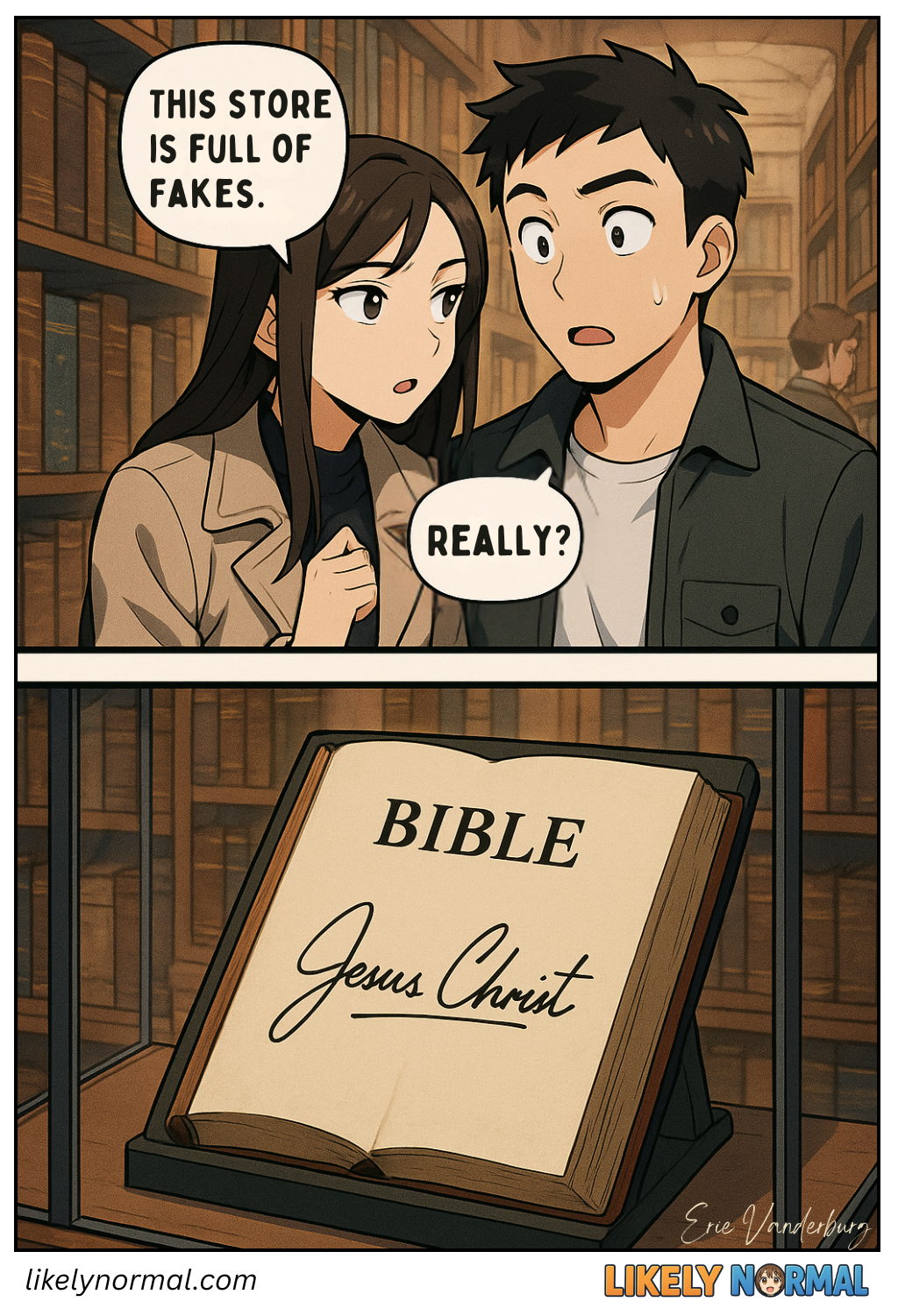Fakes and Unauthorized Books
Autographs—those sacred scribbles from the famous, the pride of collectors, and the reason eBay’s authenticity team drinks heavily at lunch. But why bother with the real thing when you can embrace the wild, unpredictable world of fake autographs? After all, nothing says “dedicated fan” like proudly displaying a signature you think might be George Clooney’s but was actually scrawled by a sleep-deprived convention volunteer named Greg. The best fakes aren’t just bad—they’re art. There’s the “Close Enough” Special (you wanted Tom Cruise but got “Tim Cruz,” which honestly sounds like his long-lost stunt double), the “Nostalgic Forgery” (your mom’s shaky handwriting on a baseball, insisting it’s Derek Jeter’s), and the “Famous Last Words” Fake (a napkin boldly signed “William Shakespeare,” despite the fact that the Bard’s real signature looked like a chicken walked through ink).
Spotting a fake is an art form in itself. If the signature looks like it was written by someone mid-sneeze, it’s either fake or the real deal from a doctor-turned-celebrity. If the celebrity in question has been dead for 200 years but their autograph is dated last week, you might have a problem. And if the signature is too legible? Definitely fake—real stars scribble like they’re being hunted by the IRS. But why waste money on questionable eBay purchases when you can make your own? Just pick a celebrity (alive, dead, fictional—commitment is key), practice their signature until it’s just wrong enough to be believable, slap it on a random object (a pizza box? A sock? The sky’s the limit), and list it online as “RARE! 100% real (probably). No refunds, I know what I have.”
At the end of the day, fake autographs aren’t scams—they’re stories. Maybe that scribble on your concert ticket isn’t actually Beyoncé’s… but wouldn’t it be fun to pretend? And if all else fails, just remember: Napoleon Bonaparte definitely signed that grocery list you found at a garage sale. (He was big on croissants. Historical fact.)

Discussion ¬